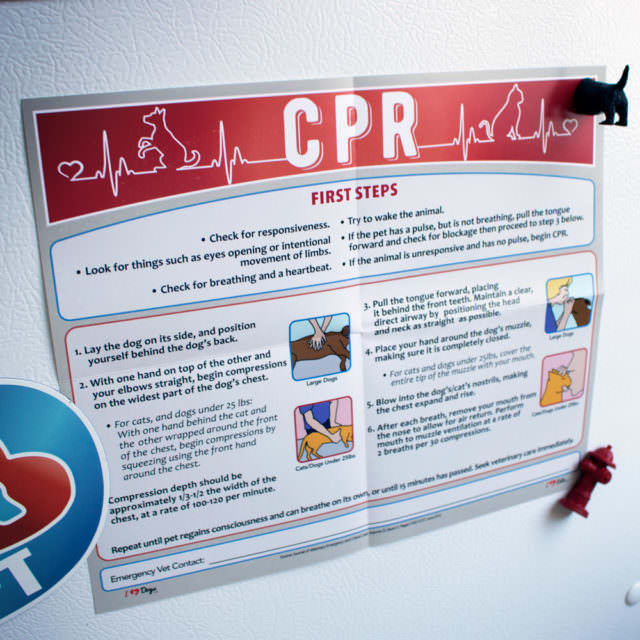Everyone knows that if someone chokes or stops breathing, performing CPR can save their life. But did you know that our pets can benefit from life-saving CPR, too?
Just like humans, animals can choke on food or objects. There are also incidents when they stop breathing, like if they have a seizure, fall into a pool, or are suffering from another medical issue. No pet parent wants to think about scenarios like this, but if you’re prepared, you can react effectively, and even save your pet’s life.
Katie Finley, a Los Angeles dog trainer, outlines the steps to take when performing CPR on a cat:
1. Check Airways & Heartbeat – One of the first steps to take when deciding to perform CPR on your cat is to make sure they aren’t breathing. If they’re not, check inside the mouth to make sure there aren’t any foreign objects blocking the throat. If you find something, try to gently remove it but use the amount of force you have to. Second, place your fingers against your cat’s inner thigh to feel for a pulse. If their heart has stopped beating, you won’t feel a pulse, but it might not be too late.
2. Prepare for CPR – Lay the cat down on their right side on a flat, firm surface. When performing CPR, you’re going to breathe into the cat’s nose and not into the mouth. Therefore, pull the tongue forward in the mouth and hold it closed.
3. Breathe into the Nose – Holding the mouth shut, breathe 4 or 5 breaths into your cat’s nose. They shouldn’t be so strong to cause damage, but strong enough that the chest should rise and fall as your life-saving breaths go in and out. Remember, your lungs are much bigger than theirs.
4. Begin Chest Compressions – With your cat lying on their right side, place your thumb and fingers (you can use either hand) on either side of their chest, just behind the elbow. Give a quick squeeze with your hand to compress the chest to about half of its normal thickness.
5. Maintenance – You will give about 10 chest compressions and one breath every 10 seconds, maintaining the routine until your cat’s heart starts up and they begin breathing.
Most importantly, seek veterinary attention immediately. Knowing how to perform CPR on your cat can greatly increase their chances for survival, should something happen. But, it should never replace professional life-saving veterinary care. Further, it will buy you time on your way to the veterinarian. It’s extremely helpful to be able to perform CPR while another person is driving you to the emergency animal hospital. Your veterinarian and their team will continue the CPR treatment and/or provide further treatment should it be needed. Again, we hope you never need to use this information, but it’s better to have it handy should a crisis arise.
Having a graphical poster with directions, such as the iHeartCats CPR Poster, available will help you remember these steps in the event of an emergency. It’s also a good idea to have such instructions on display in a common area for your family members or anyone visiting.


